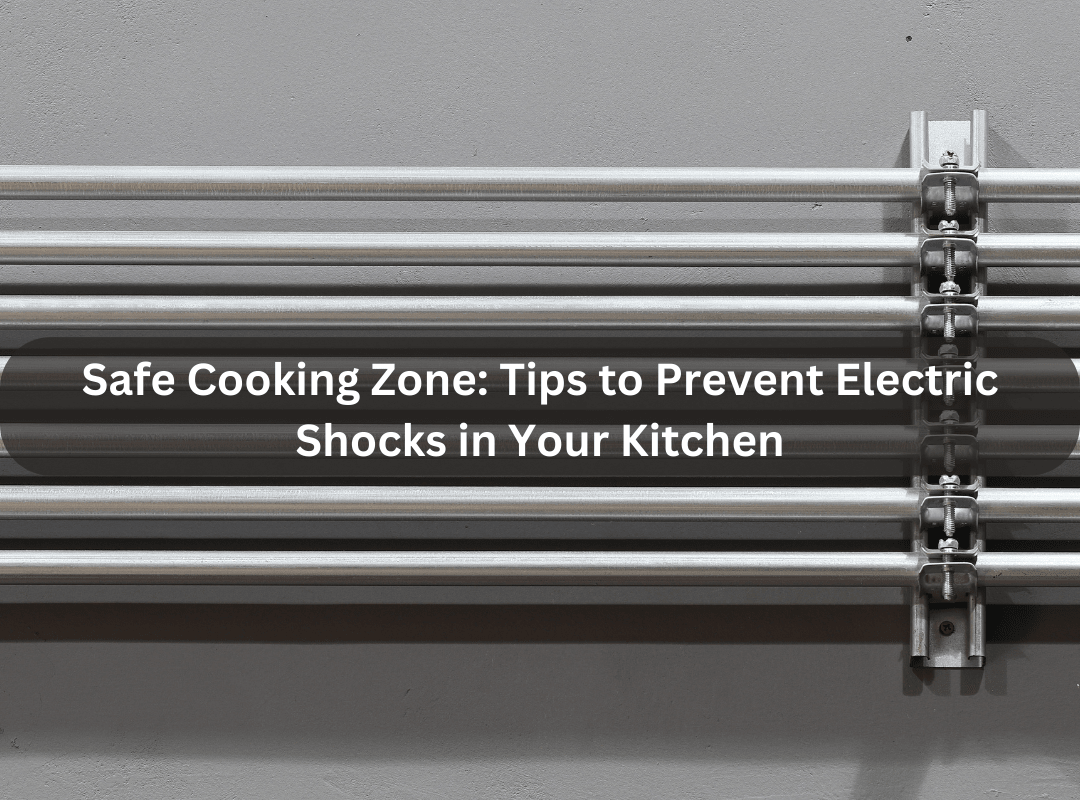Introduction For How To Prevent Electric Shock In The Kitchen
We are glad to introduce you a guide about the maximum protection of your kitchen, where tasty dishes are cooked and sweet memories are lived. We recognize that electric shock is one of the key issues when considering electrical safety in the kitchen. Electric shocks can disturb your cooking routine and pose potential danger to you, your family and friends To help you reduce these risks we have compiled information from different sources to come up with a full proof for electrical safety in kitchens.
The most important area in any household is the kitchen. This is where all manner of delicacies are prepared on a daily basis. In this busy hub, electrical appliances dominate while sockets also provide drops of dangers that can lead to an electric shock. Consequently, keeping safe against such dangers becomes highly significant for creating an atmosphere of security and tranquility in the kitchen.
Make Wiring A Priority:
One among other crucial things about secure kitchen conditions is having a well installed electricity cables. My Frugal Business suggests that it should be checked whether wiring meets safety requirements and that it has been done correctly by pros before use. Regular inspection for worn out wires or overloaded circuits will prevent some potential hazards before they happen. How Can You Prevent Electric Shock In The Kitchen
Embrace GFCI Outlets:
Roman Electric Home advocates for the installation of Ground Fault Circuit Interrupter (GFCI) outlets, especially in areas prone to water exposure like near sinks or countertops. (How To Prevent Electric Shock In The Kitchen) These outlets are designed to swiftly cut off power in the event of a ground fault, significantly reducing the risk of electric shock accidents.
Maintain Appliances:
Proline Range Hoods emphasizes the importance of regular maintenance for kitchen appliances. Check cords and plugs for any signs of wear or damage, and promptly address any issues to prevent accidents. Additionally, ensure appliances are kept dry, and avoid using them with wet hands.
Safeguard Against Water Exposure:
Keeping appliances and electrical outlets dry is crucial in preventing electric shock incidents. Promptly wipe up spills and avoid using electrical appliances near water sources to minimize risks, as highlighted by Roman Electric Home.
Secure Cord Management:
My Frugal Business suggests keeping cords away from countertops and sinks to prevent accidental exposure to water. Utilizing cord organizers or securing cords properly can significantly reduce the risk of electric shock accidents.
Childproof Outlets:
For households with young children (How To Prevent Electric Shock In The Kitchen), installing childproof outlet covers is essential to prevent curious hands from accessing electrical outlets, as recommended by Proline Range Hoods. Educate children about the dangers of playing with electrical appliances and cords to further enhance safety.
Conduct Routine Inspections:
Regular inspections of all electrical components in the kitchen are crucial for identifying potential hazards. Look for signs of damage or malfunction and address them promptly to ensure a safe cooking environment, as emphasized by Roman Electric Home.
Invest in Quality Appliances:
Opting for appliances that meet safety standards and are equipped with built-in safety features is essential. Look for certifications such as UL (Underwriters Laboratories) to ensure appliances have undergone rigorous testing for safety and performance, as suggested by My Frugal Business.
Educate Household Members:
Knowledge is power when it comes to kitchen safety. Take the time to educate all household members about electrical safety practices, proper appliance handling, and emergency procedures, as recommended across all sources.
Q1: How To Prevent Electric Shock In The Kitchen?
A1: Ensure all kitchen outlets have Ground Fault Circuit Interrupters (GFCIs) to quickly cut off power in case of a fault.
Q2: Are there specific appliances prone to causing electric shock in the kitchen?
A2: Appliances with frayed cords or damaged plugs pose a higher risk; regularly inspect and replace damaged cords.
Q3: Is it safe to use electrical appliances with wet hands in the kitchen?
A3: No, always ensure hands are dry before using electrical appliances to prevent electric shock.
Q4: Can using extension cords in the kitchen increase the risk of electric shock?
A4: Yes, avoid using extension cords for kitchen appliances as they can pose a safety hazard; use outlets directly.
Q5: How can I protect outlets near sinks from water exposure?
A5: Install outlet covers with weatherproof or moisture-resistant features near sinks to prevent water infiltration.
Q6: Is it advisable to use damaged or frayed kitchen appliance cords?
A6: No, immediately replace damaged cords to avoid the risk of electric shock.
Q7: Can a kitchen floor material impact the risk of electric shock?
A7: Use non-conductive flooring materials like rubber or wood to minimize the risk of electric shock.
Q8: Are there safety measures for handling kitchen electrical outlets?
A8: Avoid overcrowding outlets, use safety plugs, and teach children not to play with electrical outlets.
Q9: Can installing Residual Current Devices (RCDs) enhance kitchen electrical safety?
A9: Yes, RCDs detect abnormal currents and quickly cut off power, providing an added layer of safety.
Q10: How can I prevent electric shock from faulty kitchen appliances?
A10: Regularly inspect appliances, cords, and plugs for wear and tear, and promptly replace or repair faulty components.
Q11: Is it safe to use kitchen appliances with damaged power cords?
A11: No, damaged power cords should be replaced immediately to prevent electric shock.
Q12: Can I prevent electric shock by using appliances with proper certification?
A12: Yes, look for appliances with safety certifications like UL (Underwriters Laboratories) to ensure compliance with safety standards.
Q13: How can I safely unplug kitchen appliances to avoid electric shock?
A13: Grasp the plug firmly and pull it straight out of the outlet rather than yanking the cord to prevent damage and shocks.
Q14: Can proper kitchen lighting reduce the risk of electric shock?
A14: Yes, ensure adequate lighting to identify potential electrical hazards and address them promptly.
Q15: Is it important to educate family members about kitchen electrical safety?
A15: Yes, educating family members about proper appliance use and electrical safety measures is crucial.
Q16: Can using rubber mats in the kitchen enhance electrical safety?
A16: Placing rubber mats in front of the sink or near electrical outlets can provide an extra layer of insulation and reduce the risk of shock.
Q17: How should I store kitchen electrical appliances to prevent damage?
A17: Store appliances properly, avoiding crimping or bending cords, to prevent wear and damage that could lead to electric shock.
Q18: Can unplugging appliances when not in use prevent electric shock?
A18: Yes, unplugging appliances when not in use eliminates the risk of electric shock from accidental contact or short circuits.
Q19: Is it advisable to seek professional help for kitchen electrical issues?
A19: Yes, consult a qualified electrician for any electrical issues in the kitchen to ensure proper repairs and installations.
Q20: Are there specific guidelines for using power strips in the kitchen?
A20: Use power strips with built-in surge protection and avoid overloading them to reduce the risk of electric shock in the kitchen.
Conclusion On How To Prevent Electric Shock In The Kitchen
As we conclude our exploration into preventing electric shock in the kitchen, envision a culinary haven where safety seamlessly intertwines with functionality. From the strategic placement of Residual Current Devices (RCDs) to the diligent inspection of appliance cords, each precautionary step contributes to the creation of a secure kitchen space.
By fostering a culture of awareness and responsible electrical usage, the risks of electric shock diminish, and the kitchen transforms into a space where creativity thrives without compromise. Here’s to a kitchen where safety is as much a part of the recipe as the ingredients themselves, ensuring that every meal prepared is accompanied by peace of mind and a secure cooking environment.




